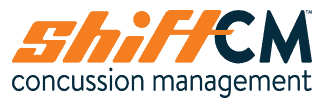We frequently get asked, is there a magic pill to treat a concussion? The simple…. answer NO!
This is a tough question to answer because the solution is that every client would benefit from an integrated approach to care. While concussions may follow generalized clinical trajectories, to truly recover from a concussion, an integrated approach of the impaired systems is essential. This means integrating vestibular-ocular exercises with rehabilitation to the autonomic nervous system along with cervicogenic and other components as well. It’s also important to note that every concussion is different so an integrated approach to care for one patient, may not look the same for another.
An integrated approach to care not only involves different systems, it also includes integrating several different health care providers to ensure all bases are covered and that each patient receives the best possible care. At Shift, we may include physiotherapy, chiropractic care, occupational therapy, massage therapy and appointments with a kinesiologist to ensure everything is addressed properly.
Another component of the care we provide that every patient could benefit from would be education and normalization of their symptoms and experiences to date. We at Shift Concussion Management find that through education and explanation of the “Why?” behind symptoms and rehabilitative exercises, patients feel more empowered and encouraged regarding their recovery. We also try to normalize their experiences because while each concussion is different, a lot of what you are experiencing (while it is frustrating) is also normal after a concussion and we try to minimize the associated anxiety and mental health components of the injury.
However, something that should be addressed is that sitting in a dark room without any stimulation is no longer recommended for concussion recovery! After an initial rest period of 48-72 hours, we at Shift Concussion Management we try to encourage earlier return to activities of daily living as long as they do not provoke symptoms. A big part of our care for most people who come to our clinic is initiation of daily aerobic exercise. Daily aerobic exercise helps to address issues with the Autonomic Nervous System, which is commonly impaired after a concussion. We will work to individualize and track intensity levels and associated symptom responses to encourage an active recovery in our patients.
Initially we will prescribe slow walks for 20 minutes outside at a level that does not provoke symptoms, as the patient begins to feel better there are different routes we can take depending on their rehabilitation goals (functional vs athletic, etc.) What we are trying to address is an overactive / stimulated sympathetic nervous system (fight or flight). Commonly after a concussion our parasympathetic nervous system (rest and digest) will lose it’s ability to help in the regulation of our heart rate response. This is partly why concussion patients may experience increasing symptoms such as dizziness, headaches, and feeling lightheaded to name a few with increased activity levels and postural changes (from seated to standing). Through progressively increasing the intensity a patient is working at throughout recovery we can help to address this imbalance between the sympathetic and parasympathetic systems and allow for patients to exercise or function with less and ultimately no symptom provocation.


Leave a Reply